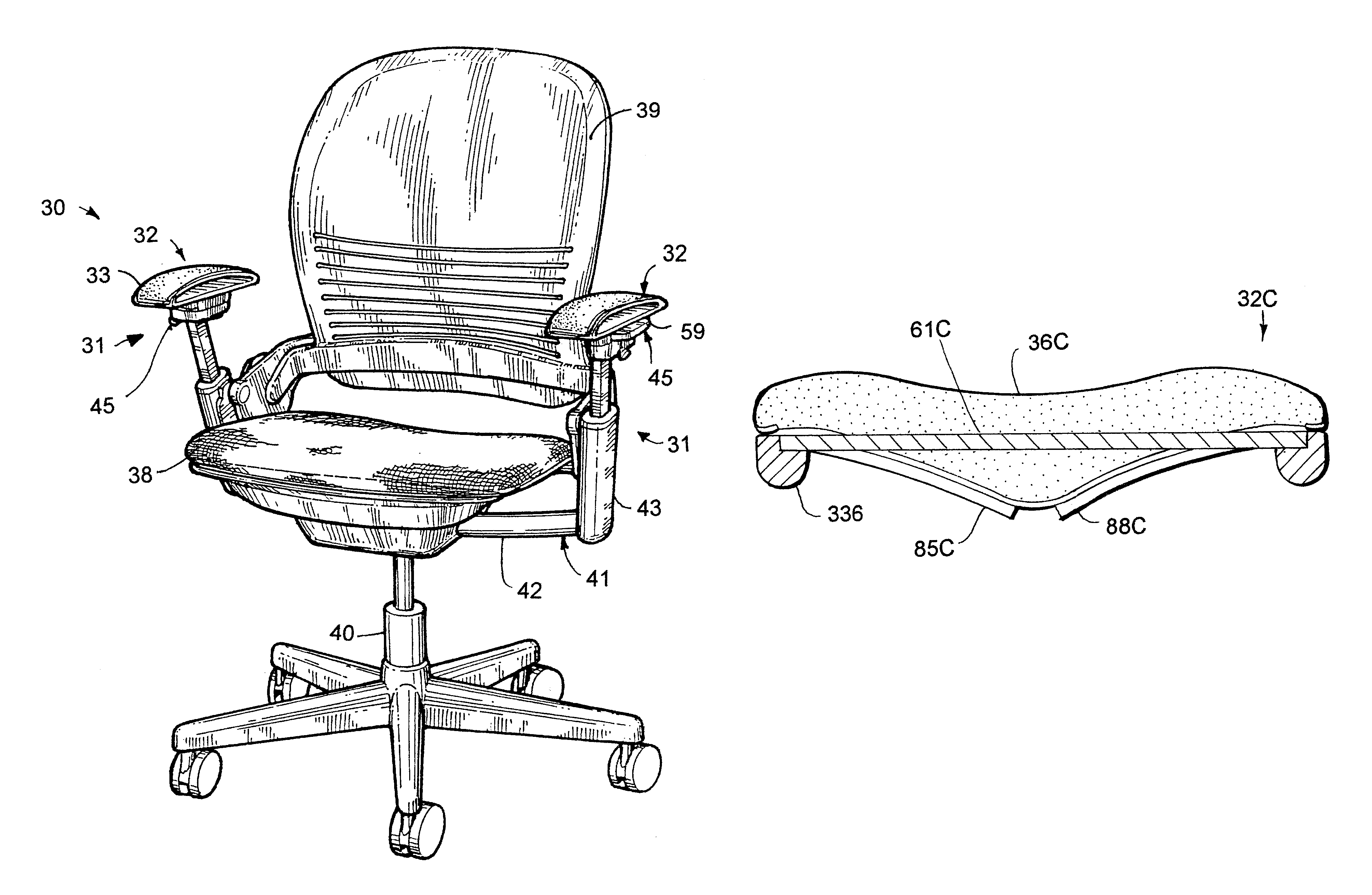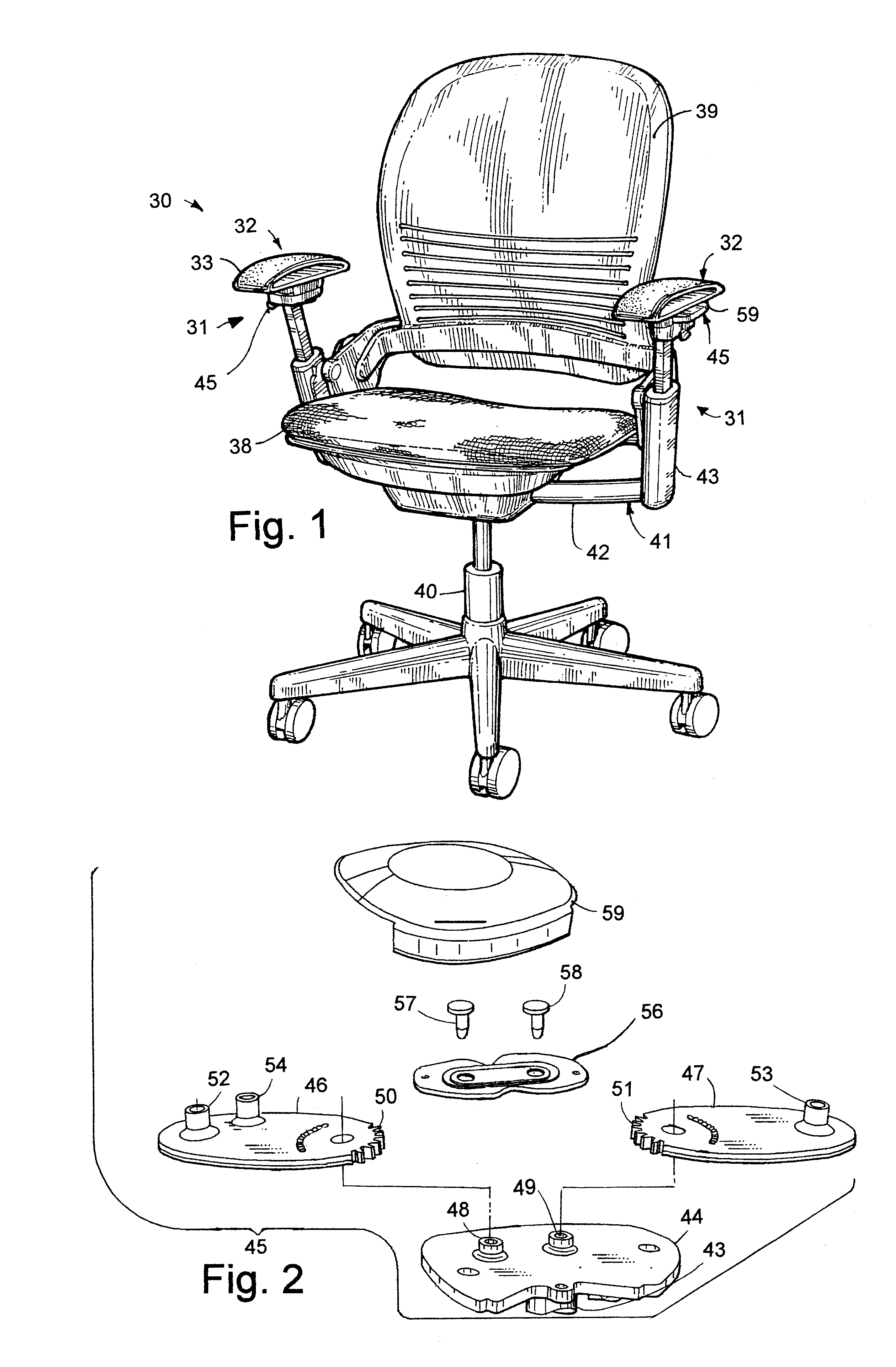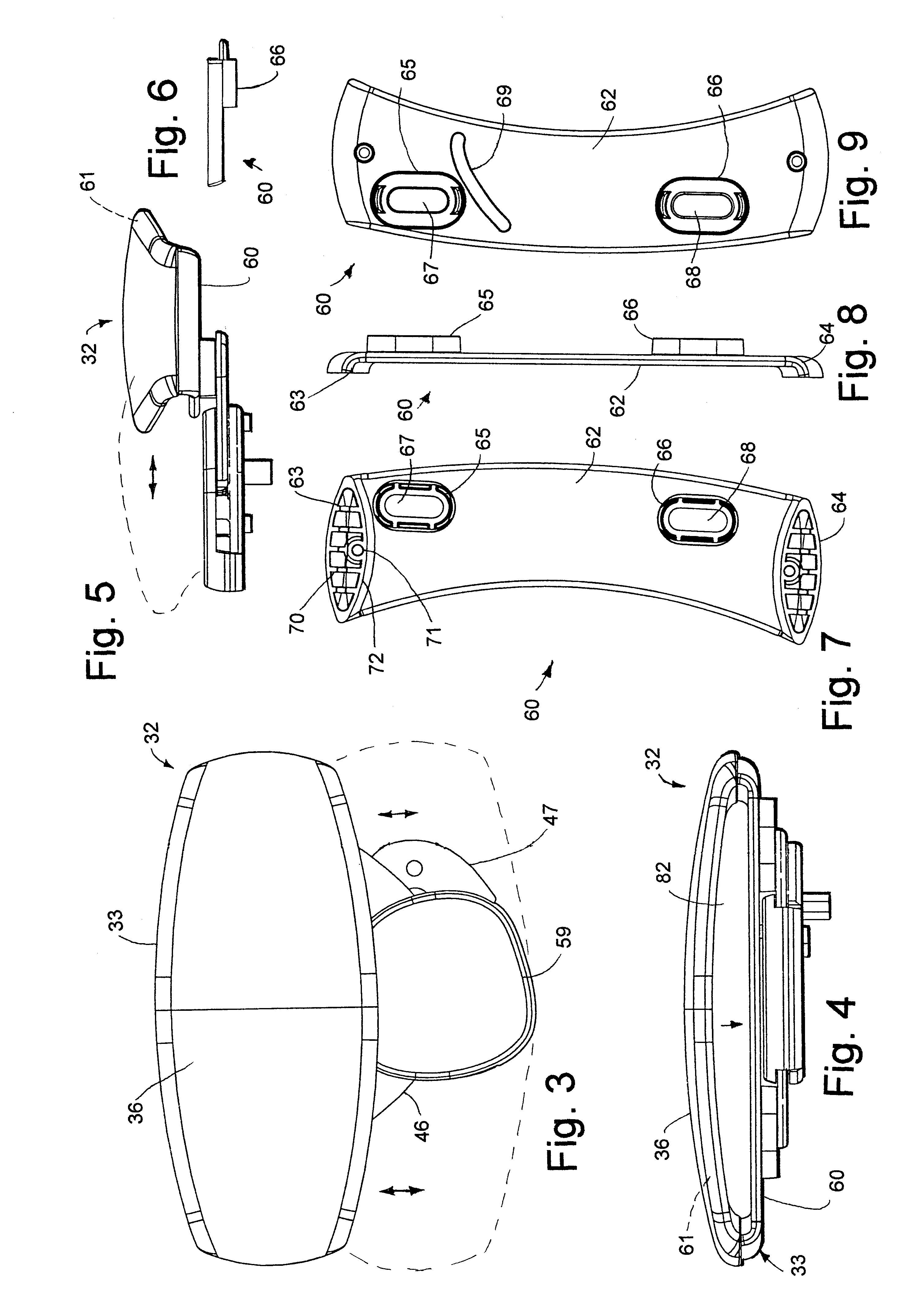Flexible armrest construction
a technology of armrests and construction, applied in the field of armrests, can solve the problems of not optimally providing the best support to users, foam cushions suffer from several limitations, and foam cushions cannot be easily compressed and collapsed, so as to achieve the effect of comfortable grasping and evenly dispersing stress
- Summary
- Abstract
- Description
- Claims
- Application Information
AI Technical Summary
Benefits of technology
Problems solved by technology
Method used
Image
Examples
Embodiment Construction
A chair 30 (FIG. 1) includes armrest assemblies 31 embodying the present invention. The armrest assemblies 31 each include an armrest construction 32 (FIG. 10) adjustably mounted atop an under-seat-anchored armrest-supporting structure 41 by a mechanical adjuster mechanism 45. The armrest construction 32 includes a loop-shaped armrest support 33 with a stiff section 34 (FIG. 16) and a flexible section 35, and has an incompressible resilient material 36 (FIGS. 13-14) with a memory, such as a gel, molded onto the flexible section 35. The incompressible resilient material 36 is sufficiently thick and resilient to comfortably support a person's forearm on the support, yet further is sufficiently flowable and stretchable to at least partially move off or through the flexible section 35 when significant pressure is applied to the incompressible resilient material 36, such as when a seated user rests their forearms on, presses on, or grasps the armrests. (See FIG. 19.). In this way, the ar...
PUM
 Login to View More
Login to View More Abstract
Description
Claims
Application Information
 Login to View More
Login to View More - R&D
- Intellectual Property
- Life Sciences
- Materials
- Tech Scout
- Unparalleled Data Quality
- Higher Quality Content
- 60% Fewer Hallucinations
Browse by: Latest US Patents, China's latest patents, Technical Efficacy Thesaurus, Application Domain, Technology Topic, Popular Technical Reports.
© 2025 PatSnap. All rights reserved.Legal|Privacy policy|Modern Slavery Act Transparency Statement|Sitemap|About US| Contact US: help@patsnap.com



